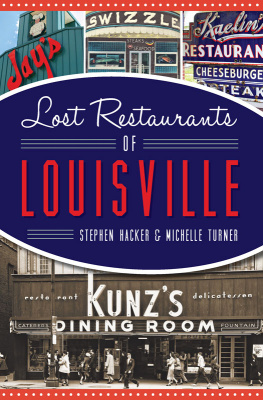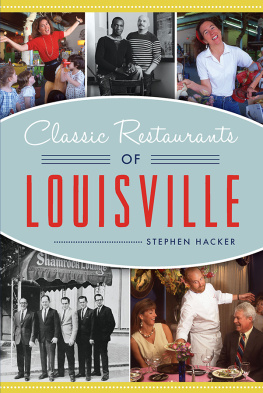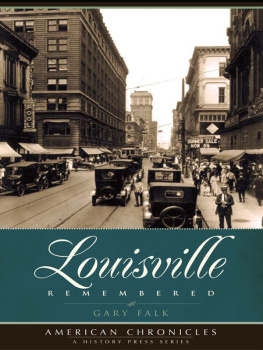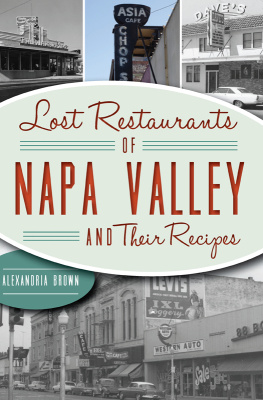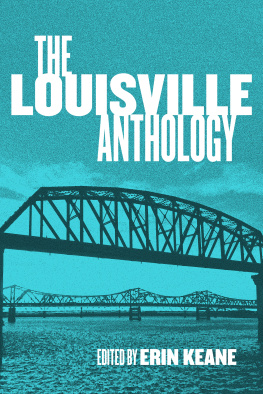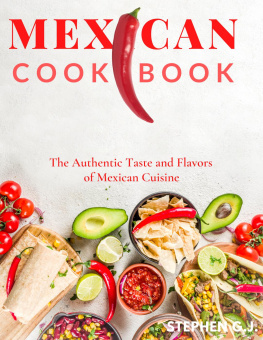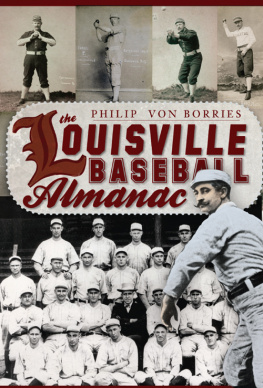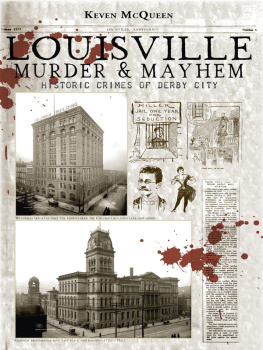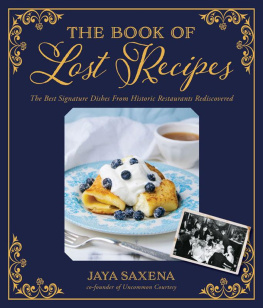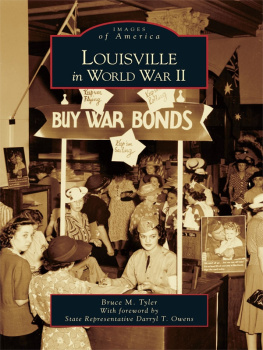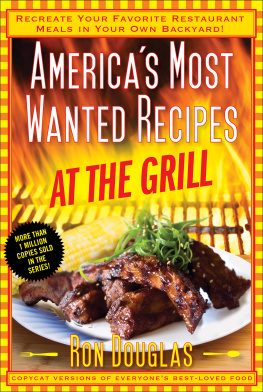
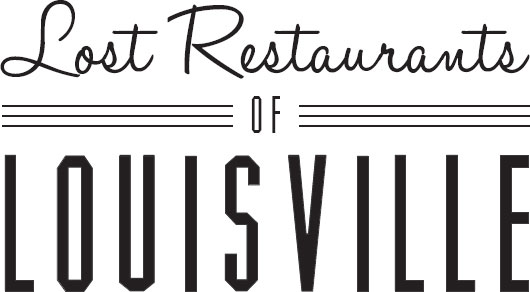

Published by American Palate
A Division of The History Press
Charleston, SC
www.historypress.net
Copyright 2015 by Stephen Hacker and Michelle Turner
All rights reserved
First published 2015
e-book edition 2015
ISBN 978.1.62585.628.9
Library of Congress Control Number: 2015949290
print edition ISBN 978.1.46711.812.5
Notice: The information in this book is true and complete to the best of our knowledge. It is offered without guarantee on the part of the authors or The History Press. The authors and The History Press disclaim all liability in connection with the use of this book.
All rights reserved. No part of this book may be reproduced or transmitted in any form whatsoever without prior written permission from the publisher except in the case of brief quotations embodied in critical articles and reviews.
For Buffy, who is very fond of restaurants.
ACKNOWLEDGEMENTS
We are grateful to John Nation, Susan Reigler, Richard Des Ruisseaux, Greg Haynes, Bim Deitrich, Nancy Shepherd, Alan Rupp, Greg Haner, Paul Grisanti, Kathy Cary, Susan Seiller, Ray Simmons, Laura Leong, Lee Luvisi, Jenny Ballard, Denis Kitchen and many others who allowed us their time, photographs and memorabilia. We especially appreciate the informative and helpful Keith Runyon, who granted more of his time than we deserve. We would also like to thank the staff of the Filson Society, the University of Louisville archives and the Louisville Free Public Libraryall of whom were unfailingly patient, gracious and giving on multiple occasions. And many thanks to Jo Altemeyer for her incomparable transcription skills.
INTRODUCTION
A long with bats, bourbon whiskey and an early May horse race, Louisville has become famous for its restaurants. KFC and Papa Johns Pizza are known around the world. Celebrity chefs and stellar cuisine consistently gain national attention. Louisvilles restaurants date back almost to the founding of the city, when taverns and hotels sprang up to serve pioneers moving westward after the Revolutionary War. And while Original Recipe, Hot Browns and Benedictine may all be delicious, they are only appetizers for the interesting, odd and occasionally profane stories of Louisvilles legendary restaurants. Arranged roughly in the order of their establishment, these restaurants left Louisville with signature dishes, arresting architecture and outsized personalities. While we couldnt include every amazing story of Louisvilles former restaurants, we believe we have provided a broad and rich portrait of many of the restaurants that set the table for todays dining scene. Weve also provided recipes to help re-create several dishes from Louisvilles lost restaurants. Bon apptit!
Chapter 1
KOLBS
Rolled Oysters in a League of Their Own
The giant Louisville Slugger bat on Main Street is an obvious sign that, in Derby City, the roots of Americas pastime run deep. Some of those roots were a little dirty, but Al Kolb and his tavern helped clean them up.
By 1857, baseball had become so popular that New Yorks Knickerbocker Club asked several neighboring teams to assemble and agree upon a standardized set of rules, including forbidding any player from receiving payment. This National Association did not last long, and paying players became a common practice. By 1869, the Cincinnati Red Stockings became baseballs first professional club, and within a few years, others joined under the National Association of Professional Baseball Players. It was a loose organization in every sense of the word, and gambling and bribery soon became widespread. America was beginning to see baseball as seamy, sleazy and unattractive. Several club owners decided to do something about it. A Louisville bar was where they chose to do it.
Tony Montedonico opened a tavern at 323 West Liberty in 1865. At the end of the bar was a small back room where, in 1875, representatives from Louisville, Chicago, Cincinnati and St. Louis agreed to form the National League. Expelling players for selling malt or spirituous liquors on the league grounds helped elevate baseballs reputation. And even after Montedonicos tavern passed to Al Kolb, the back room kept its connection to baseball. Kolb said many old-time baseball greats, such as Pete Browning (the original Louisville Slugger), would stop by, with one sports columnist suggesting the little back room should be preserved for posterity, were it possible to dismantle and reconstruct it in baseballs hall of fame at Cooperstown.
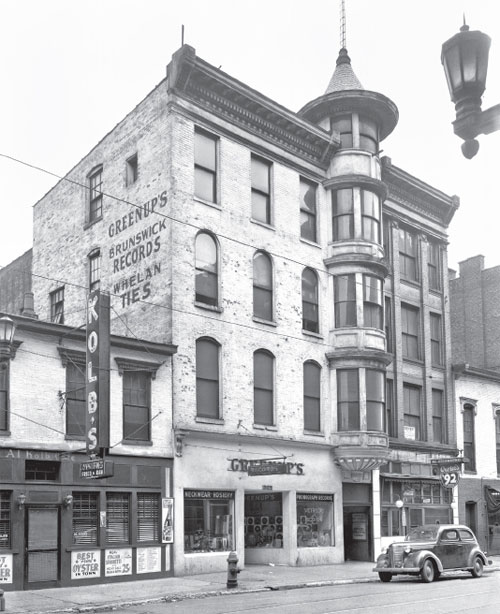
Kolbs, where baseballs National League was formed. Courtesy of University of Louisville.
Until Kolbs closed in 1947, the little downtown tavern also remained connected to another Louisville traditionthe rolled oyster. Kentucky culinary author Marion Flexner wrote that Al Kolb insisted his mother brought the recipe [for rolled oysters] from New Orleans, competing with the Mazzoni familys more accepted claim that they invented the fist-sized, croquetted affair in the 1870s.
Razed as part of urban renewal, the site of the formation of the National League is now part of the Hyatt hotel and parking garage complex. But baseball and the rolled oyster are still parts of the city.
Chapter 2
BAUERS
From Ponies to Preppies
By 1870, things had settled down enough from the Civil War that a smithy could open on the road between Louisville and Brownsboro, a farming community in what is now Oldham County. Originally a dirt track traced by preRevolutionary War settlers, the Louisville & Brownsborough Turnpike Road had become a for-profit enterprise, with travelers forced to pay a toll so pikes barring their way would be turned to allow passage. John Bauer set up his shop just about a mile east of the Louisville tollgatea place to get a horse shod, a wagon repaired and perhaps some supplies. Bauers wife began serving soups and sandwiches to people waiting for their horses and wagons.
By the 1920s, the automobile was making smithies obsolete and suburban development was spreading around Bauers. An antique bar brought in around 1890 helped the business, but Mrs. Bauers food helped more. John Bauers son, Albert, saw the future, took over and made Bauers a restaurant. The area surrounding the former turnpike became a wealthy suburban neighborhood, especially after World War II. By then, Albert Bauer had become a successful restaurateur and banker. He died in 1953, leaving sons Arthur and Albert Jr. in charge. As the restaurant continued its popularity, the Bauers began giving up living quarters to increase the area in which they could entertain.
A 1954 Louisville Times dining guide described Bauers as a place where gracious dining has been enjoyed by discriminating people since 1870, famous for its delicious Dutch Plate and special Smearkase. The spreadable fresh farm cheese and other Dutch dishes, such as wienerschnitzel and hot slaw, were on the menu alongside more American fare like Mignon, Kentucky Country Ham and Fried Chicken dinners. There was also a melted American cheese, fried tomato, onion and bacon sandwich known as a Bruddy Curran, supposedly named for a regular who had invented it. A 1983
Next page
